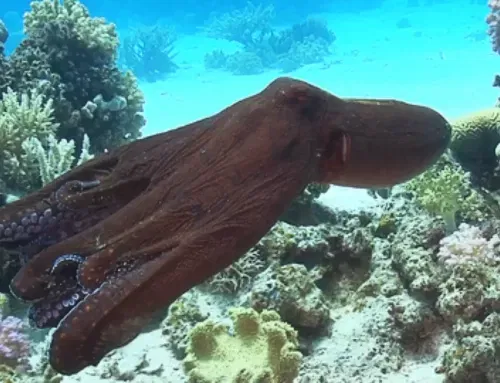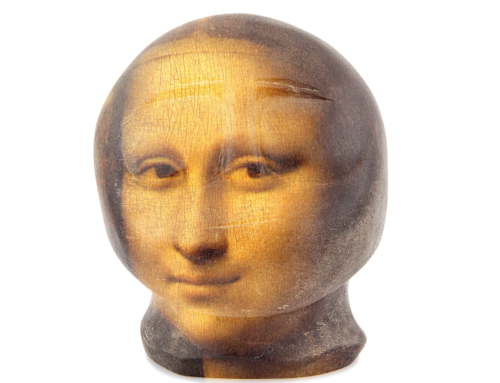Perspective is a tricky, subjective devil, suggesting a relative hierarchy. Most would say a person’s perspective reflects what he or she recognizes and believes is most important. When complaining about this or that, I commonly put my mind at rest by telling myself to relax and “keep some perspective.” At times I have joked about the danger of perspective when a postdoctoral fellow in my laboratory goes on vacation.
“Great,” I would say. “Where are you going?” I often added, tongue (partly) in cheek, “Have a wonderful time, but by all means, don’t develop any perspective.” In other words, beware developing a perspective that the pleasure of play outweighs the drudgery of research needed to advance scientific knowledge.
But one night Stephen Roth, my son Anton’s father-in-law, put perspective in a different context for me. I was visiting Stephen at his rustic cabin on Hardwood Lake in Dorset, a small hamlet north of Toronto. Stephen – a big man – robust, intelligent – had an impressive knowledge about more things than I could list.
“Let’s go check out the stars, Joram,” he said. It was a magnificent evening by the wooded lake, with the moonlight reflected on the fresh snow.
Stephen and I went outside in the crisp, cold winter night in our down parkas and wool scarfs armed with binoculars. When I first gazed at the heavens I felt overwhelmed by its immensity and myriad stars. The universe with its far-off galaxies, infinite time and space, and light shining from dead stars required a perspective outside my frame of reference. It was abstract poetry. For me, infinity, space and time resided within my life span. The night sky dotted with points and smears of light was a fairyland to roam as if in a dream while dwelling on my sense of insignificance. Was that the perspective I warned the postdoctoral fellows to avoid?
After I waxed eloquent to Stephen about how beautiful it all was, he brought me down to earth and started identifying the stars and galaxies by giving them names and relative locations in the boundless universe. I can’t remember most of the names he told me, but that doesn’t matter. Slowly the sky began to look different, not less poetic, just more real. Some celestial bodies and galaxies took me some time to identify with my binoculars, but when they did emerge in the field of vision, I was spellbound. In less than an hour – an insignificant timespan on the “perspective scale” of a lifetime – giving names to what I saw with binoculars reduced the heavens from an abstract soup of mass, energy, particles, and bodies of all sorts floating adrift – a package too obscure to comprehend – to a part of nature that I could think and talk about. My perspective of astronomy as poetry tilted to that of the natural world of science that was more familiar.
I realized then that the blend of scientific reality – the universe is not a mirage – with aesthetics colored my view of science throughout my career. Perhaps because I come from a family of artists, I even initially equated truth with beauty. I cringe a bit (not completely) now when I remember conflating scientific truth with aesthetics (although I have always found what is true in nature rather beautiful). I have outgrown that phase. Nature is not art. Nonetheless, I have always viewed nature with the eye of an artist and considered science as a discipline that lends itself not only to analysis but to self-expression as well. What I choose to study, how I approach the work, how I interpret and report the results, what directions I take are all forms of self-expression.
The simple fact of naming what I saw in the sky gave me a greater sense of order and understanding, which enhanced, not diminished, my understanding and appreciation of the ethereal heavenly landscape.
Names are needed for whatever we observe in order to identify the subject, to provide the initial platform of knowledge about it, and to communicate with others. Chaos results without names. Imagine living for a day in a nameless world. Nothing would be different, but we would be lost. Even concepts are buried in names, such as water (liquid), ice (solid) or steam (gas). Named stars became more real and more interesting. A robin and a penguin are both birds, but their names give us a sense of what they are and how they differ.
But there’s also a false power to the usefulness of names, a trap to beware. There is always more than one perspective, as the cliché goes: “There’s more than one way to skin a cat.” Names often inflate what we think we know and limit how broadly we think.
To name is not to know. To call one bird a robin and another a penguin suggest that we know more about these birds than we actually do. Robbins and penguins can be visualized and their physical differences jump out, but that’s limited knowledge. What are their evolutionary ancestors – their ancient homes? Which bird is closer to their ancestral dinosaurs? Are they closer relatives than their different names and niches imply?
Scientists name everything they discover, as they must. But every name delimits knowledge as much as it identifies the subject. Most individual proteins have more functions than their scientific names suggest. For example, hemoglobin does more than carry oxygen to tissues. The name of the proteins of my specialty – crystallins, the abundant proteins in the lens responsible for focused vision – has limited studies on them for a hundred years to their function in the lens. Their name – crystallins, meaning no more than the proteins in the crystallin-clear lens – gave a false impression that these proteins were specialized exclusively for the lens where they were first identified, but it was shown more recently that, despite their name, crystallins have widespread functions in entirely different tissues. Similarly, the names of celestial bodies mean nothing to the gravitational forces that governs them.
So, if I had another chance to advise postdoctoral fellows about their vacations, I would wish them a happy holiday and hope they explore different perspectives.






Leave A Comment